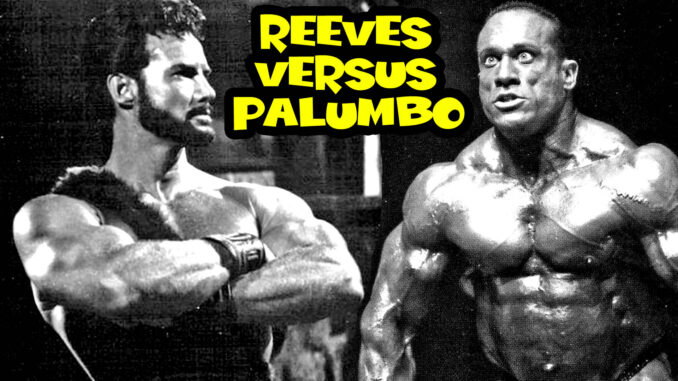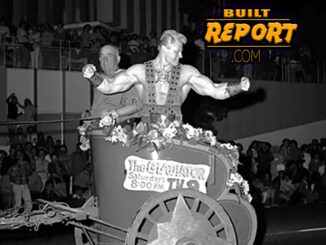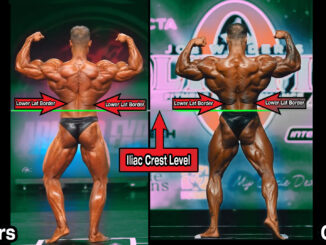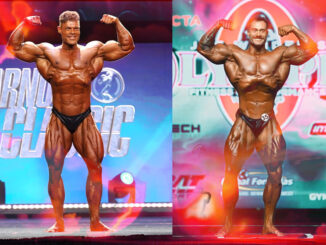
Transcript
Before analyzing our animated morph between Steve Reeves and Dave Palumbo, we should mention that Palumbo’s feet and ankles were composited from another photo of Palumbo which was a different pose but included his feet, which this photo originally didn’t, as he was wearing shoes.
The following is a very broad overview of Reeves versus Palumbo structurally and aesthetically and it mostly boils down to the waist area because that is the most difficult area to decipher on Palumbo. Palumbo was kind of the anti-Reeves physically and there are many dissimilarities that can be broken down body part by body part but, for the sake of brevity, this video will mainly focus on the waist area and skin tone.
Looking at the waist, you can trace the bony landmarks of Reeves and Palumbos ribs right below the chest in this quicker transformation. It’s hard to tell exactly how much of Dave’s wide waist is due to ribcage size, how much is muscular development, how much is some form of distension, or possibly other factors. In this double biceps pose, Palumbo’s lower ribs appear to flare out. In this image, there appears to be bone structure contributing to waist width, even though Dave didn’t appear to be this barrel waisted earlier on in life. Dave appeared ecto mesomorphic in this apparent college photo and Steve Reeves looked very mesomorphic, and very aesthetic, in this photo at around 18 years of age. Beyond Palumbo’s larger ribcage and waist area distension, his external obliques bow out well beyond his pelvis. Notice with Reeves that his oblique area is actually a little narrower that his narrow hips. Here’s an earlier Palumbo photo showing narrower obliques as well as less abdominal distention.
Palumbo’s competitive years were influenced by a bodybuilding era that was pushing for skin so thin that, what looked like granules, appeared under the skin, also known as the grainy look. Unhealthy looking vascularity was tied in with this look. The grainy look is an acquired taste promoted in bodybuilding circles but not something that is necessarily desirable to have if you’re not conditioned to assign value to elderly appearing skin. There was a similar conditioning in women’s bodybuilding starting innocently enough with Rachel McLish but quickly morphed into something else entirely. Male bodybuilding’s descent into the grotesque took much longer and steps like the classic division are attempting to rectify the freak show aspects of professional bodybuilding, but the amount of supplements necessary to compete, even in the classic division, reduces the genetically gifted gene pool to the best of those that are willing to subject their bodies to the unhealthy, life shortening, and experimental protocols required to be competitive. It’s become kind of a trade off. You can either have the people with the best genetics competing, but they’d draw the line and take considerably less supplements, or as it is now, have the people with the best genetics, but specifically the best genetics of those that are willing to risk seriously harming themselves and the aesthetic complications of trying to simulate muscle.
After Reeves stop competing, he lost muscle size but still looked like Reeves, he maintained his structure. After retiring from competitive bodybuilding, Palumbo no longer maintains what was at least partially perceived as his basic frame. Sure, Palumbo had a lot of muscle while competing, which you’d assume that he’d lose after ceasing what activities contributed to his competitive bodybuilder look, but most of what appeared to possibly be a jumbo structure somewhere under all that muscle, isn’t consistent with how he looks structurally now. Steve Reeves died at 74 but maintained his strong look, throughout his life.




Be the first to comment